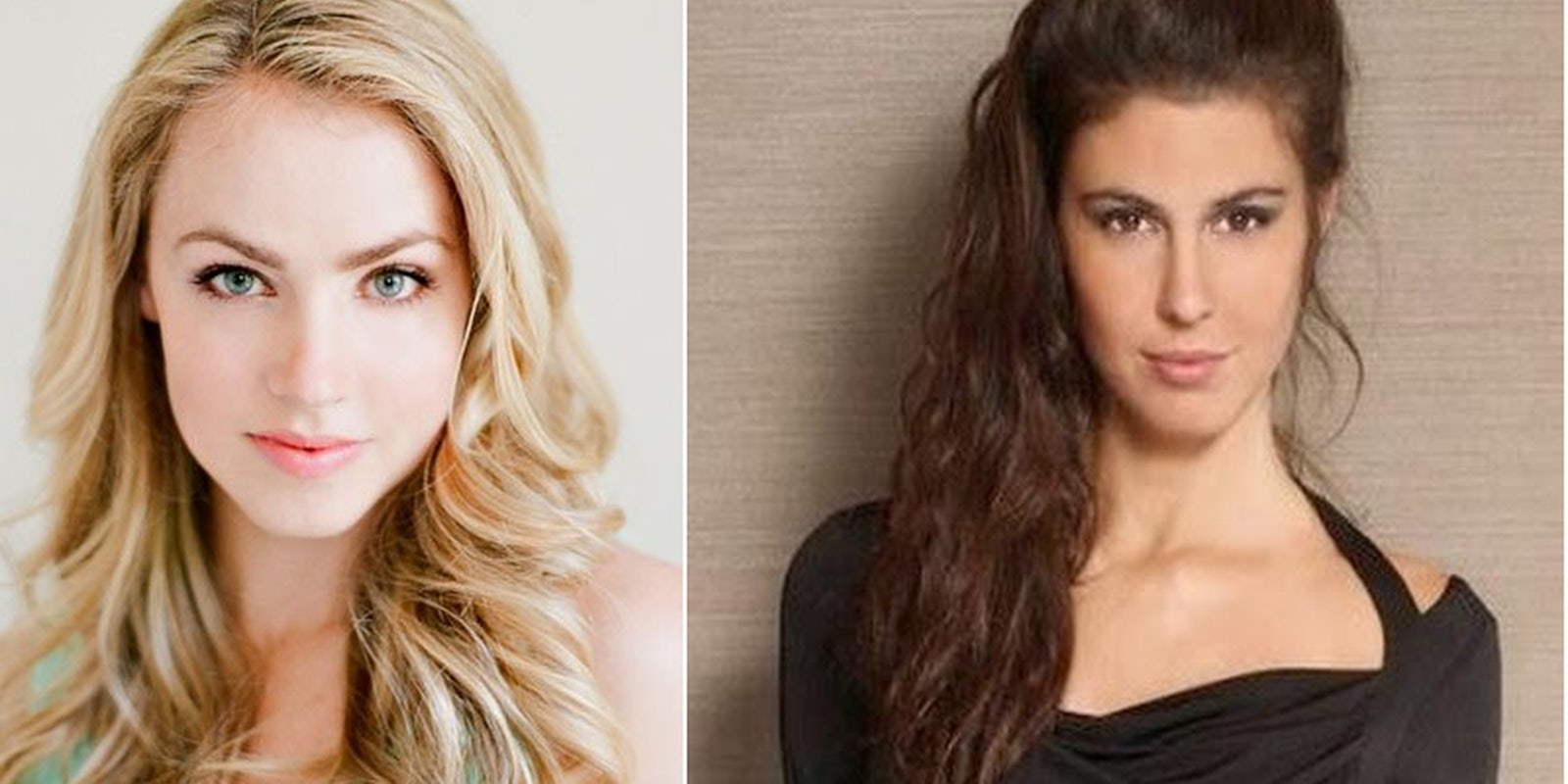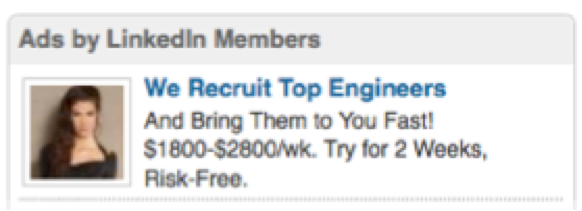On Friday, a baffled hacker community got a firsthand lesson in just how bizarre sexism in the tech industry can be. LinkedIn and Toptal, a small developer networking platform, essentially played a round of credibility chicken over Toptal’s advertising on the site.
The incident involved a brief attempt by LinkedIn to pull ads for female engineers—because it claimed that its users had complained about their appearance.
After initially disabling the ads without explanation, LinkedIn asked Toptal to change the women in its advertising to images that were “related to the product advertised.” After contesting the decision and then eventually complying, Toptal’s CEO, Taso Du Val, responded with a flabbergasted blog post:
The fact of the matter is: members of the tech community (LinkedIn users) saw it as impossible that our female engineers could actually be engineers, and a leader of the tech community (LinkedIn) agreed with them. Unfortunately we’re banned from showing anything except 100%, all male software advertisements from now on and so, that’s what you’ll be getting. I’m disappointed both on a personal and professional level. I expect better.
As vague as the reasons behind LinkedIn’s stated decision were, onlookers at Hacker News generally concluded that the women used in Toptal’s advertising appeared too glamorous to be “real” engineers.
But when is a woman too glamorous to feature in an ad about engineering? Toptal readers largely sided with Du Val in claiming that LinkedIn’s catering to users who objected to the ads was a sexist move. “LinkedIn appears to be engaging in slut-shaming, and nerd oppression because no female engineer could look good. Engineers must be slide rule nerds!” commented one reader.
But other readers saw the issue as one of truth in advertising rather than sexism. Toptal’s ads gave off a “spam” vibe to readers, many of whom felt that the ad copy read like veiled sexual innuendo. “Imagine if someone saw this ad while looking over your shoulder, didn’t look very closely, and all they saw was a pretty face and ‘$1800-2800/wk,’” commented Hacker News reader cbhl.
“Unfortunately, attractive women are often used on spam ads (dating website),” wrote another reader, dwild. “This has nothing to do with the fact that they don’t believe they could be engineer[s], it’s about the fact that it look[s] like [spam].”
Complicating the issue was the fact that Toptal used a mix of stock photos and real photos from real engineers who had their portfolios on its website. These included a stock photo of actress Amanda Schull, whom Toptal later removed and deleted all reference to, deleting comments as well when people pointed out her identity. “And even if they were only stock photography, who cares?” Du Val wrote. “The point is, they’re perfectly fine and represent normal professional people.”
After removing Schull’s picture, the one remaining example Du Val gave of women in Toptal’s advertising was Argentinian engineer Florencia Antara. “Florencia Antara is 100% authentic,” he protested in a comment, adding that the picture they used for the ads had come from her own profile.
Photos via Toptal
Antara’s appearance in the ads prompted a flurry of speculation—everything from one reader declaring that she was “staring at the camera as if she is about to make love to it” to other readers checking her resume and deciding she wasn’t a “real engineer”—though gus_massa at Hacker News did grant, “Probably she has enough work experience to do the work correctly.”
LinkedIn eventually agreed to reinstate the ads, but the vagueness of their message continued. According to a Saturday afternoon update by Du Val, the company had decided, “after careful consideration and careful review of all ads, landing pages and the nature of our business, they will re-enable all of our ads.” Perhaps LinkedIn needed to be convinced that Toptal was actually a real software developer networking platform, rather than a front for sex trafficking women with nice hair, lipstick, and non-revealing clothes.
But LinkedIn spokesmah Fenot Tekle informed the Daily Dot by email late Friday night that the ads “were rejected in error” during a “standard review process.”
Although Du Val was satisfied with LinkedIn’s response, neither of these explanations covers why LinkedIn sided with the users who complained about the ads to begin with, nor why the only temporary solution was for Toptal to remove only the ads with women.
Even if Toptal’s choice to use attractive women in its advertising made its ads look less legitimate, the messy state of the tech industry regarding female representation easily overshadows criticism that the women were just too attractive to make the ads look authentic.
And in the end, LinkedIn’s decision to act on the mistaken assumptions about Toptal’s credibility may have ultimately been far more damaging to its own.
CORRECTION: This article previously identified Florencia Antara as a Brazilian engineer. She is Argentinian.
Photo by Aja Romano




